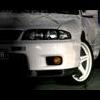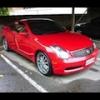Announcements
-
Similar Content
-
Latest Posts
-
I installed it all myself, It was really easy to install. I got a professional to do the degas/gas.
-
By CanadianGuy · Posted
Finally had some time after working on other projects to jump back on this thing. Pulled all 4 wheels to check the brakes over and lucked out, only needed to bleed them/change fluid to get everything working! Took it for its first quick spin (around 2km) up the road and ran great! Sounds like I have a left rear wheel bearing that needs replacing and there’s a shake in the steering wheel but the tires are absolutely junk on this thing and had been sitting flat when I went to first look at the car so we’ll see if that’s the cause. Tach randomly started working but I notice if my hicas light comes on the tach stops working 🙃 yay for electrical gremlins -
Bunnings car park it is! if you buy the kind of dampers with the adjustable top on the strut you can see it, red, purple? So many options.
-
Yeh a meagre benefit, what strut tower brace are you using? Eventually all the suspension and tyres are done and you get to ... meagre benefits. Narrow end of the wedge, all that stuff.
-
Yeh not doing anything with spacers at all, ty for the info
-




Recommended Posts
Create an account or sign in to comment
You need to be a member in order to leave a comment
Create an account
Sign up for a new account in our community. It's easy!
Register a new accountSign in
Already have an account? Sign in here.
Sign In Now